
Explore 100 Tasty Fruits from Every Corner of the Earth!
Dive into this engaging and straightforward guide featuring 100 popular fruits enjoyed worldwide, complete with details on their looks, flavours, standout traits, and everyday uses to inspire your next fruity adventure.
1.
Açaí
The açaí berry is a small, dark purple fruit native to the Amazon rainforest in Brazil. It has a rich, earthy flavor with hints of chocolate and berries, and is renowned for its high antioxidant content, often used in smoothies, acai bowls, or as a health supplement.
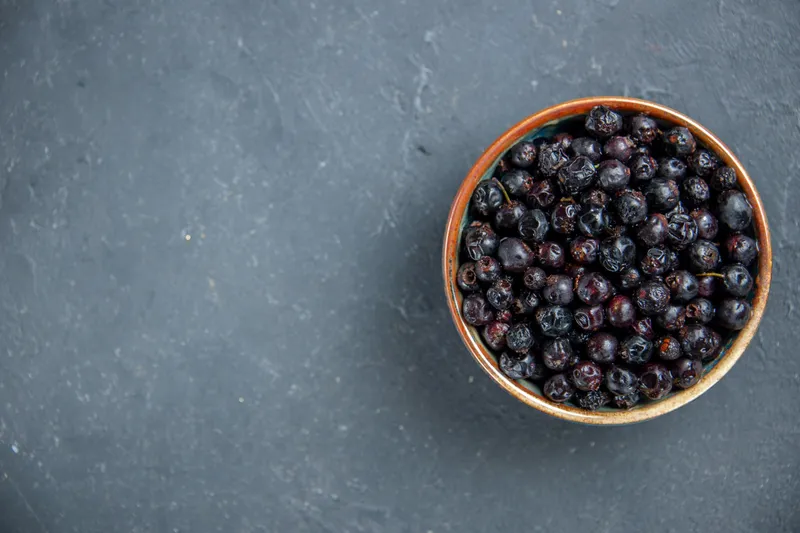
2.
Acerola Cherry
Acerola cherries are small, bright red fruits resembling cherries, grown in tropical regions like the Caribbean and South America. They have a tart, tangy taste and are one of the richest sources of vitamin C, commonly used in juices, jams, and dietary supplements.
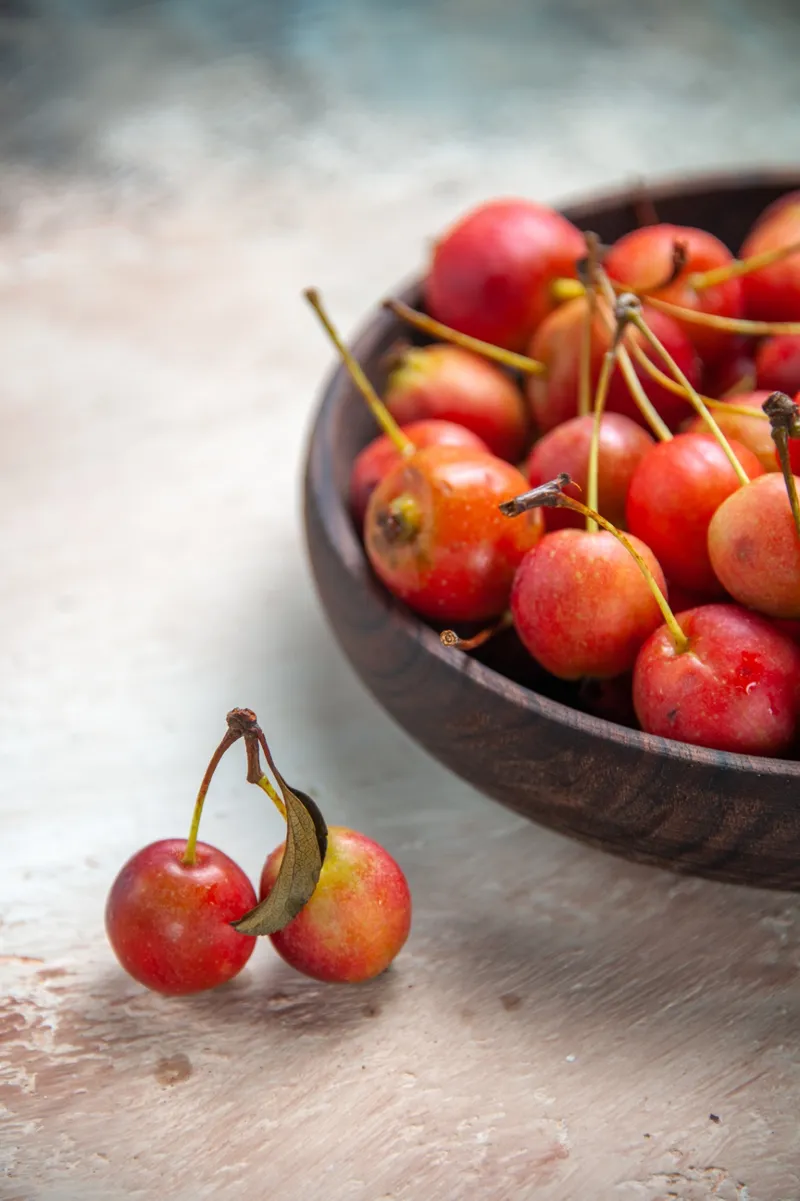
3.
African Mango
The African mango is a yellow, oval-shaped fruit from West Africa with a large central seed. It has a mildly sweet, fibrous flesh and is valued for its potential weight loss benefits, often consumed fresh or processed into extracts and supplements.
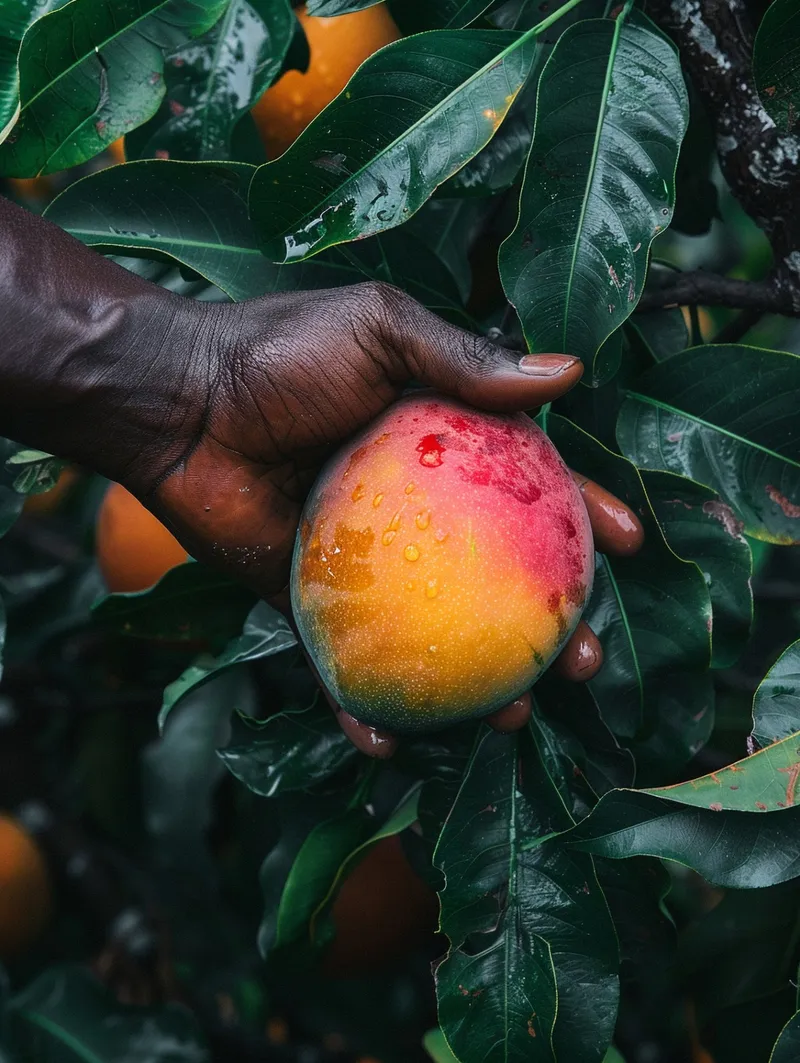
4.
Almond
Almonds are the edible seeds of the almond tree, botanically classified as a drupe fruit with a hard outer shell. They have a nutty, slightly sweet flavor and are rich in healthy fats, commonly eaten raw, roasted, or used in baking and milk alternatives.

5.
Apple
Apples are crisp, round fruits available in red, green, or yellow varieties, originating from Central Asia but grown worldwide. They offer a sweet or tart taste depending on the type, and are packed with fiber and vitamins, enjoyed fresh, in pies, or as cider.
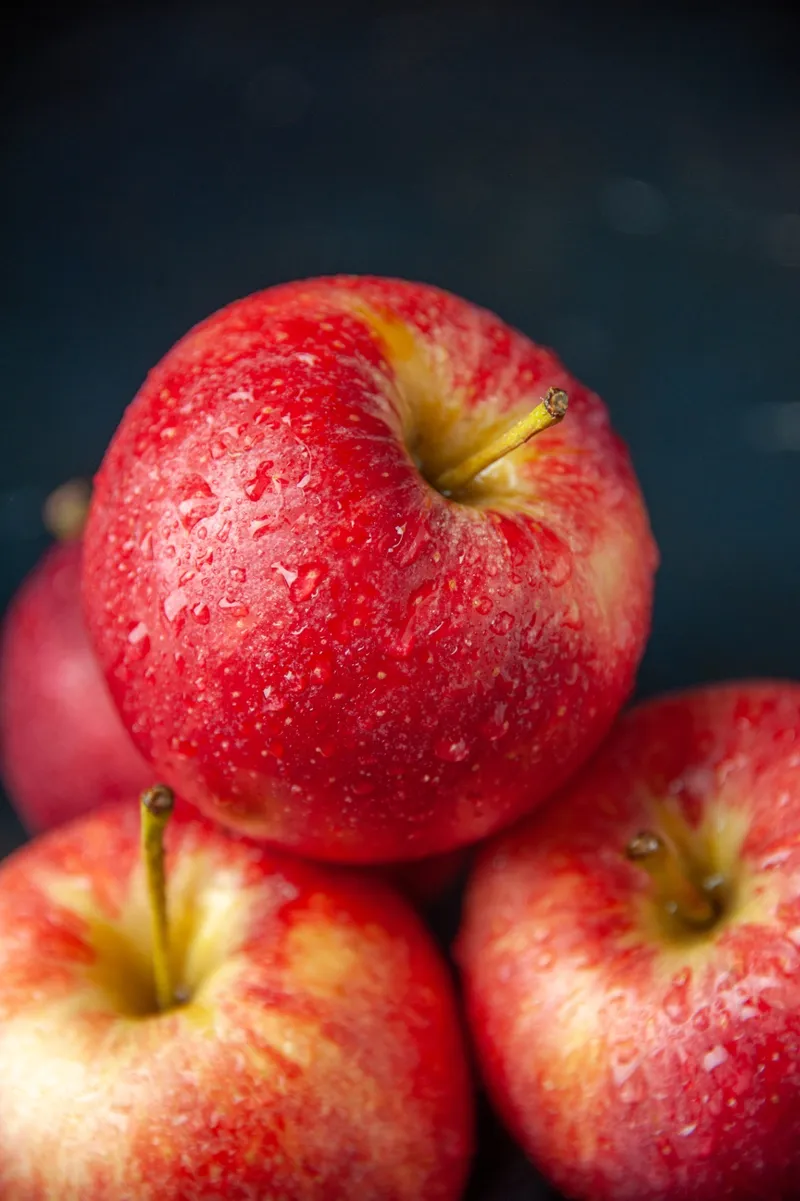
6.
Apricot
Apricots are small, orange stone fruits with velvety skin, native to China and Central Asia. They have a sweet, juicy flavor with a slight tartness, rich in vitamins A and C, and are commonly eaten fresh, dried, or used in jams and desserts.

7.
Asian Pear
Asian pears, also known as apple pears, are round, crisp fruits with a juicy texture, originating from East Asia. They have a sweet, refreshing taste similar to a pear but with the crunch of an apple, often eaten fresh or added to salads.

8.
Avocado
Avocados are pear-shaped fruits with creamy green flesh and a large central pit, native to Mexico and Central America. They have a mild, nutty flavor and are high in healthy fats, commonly used in guacamole, salads, or on toast.
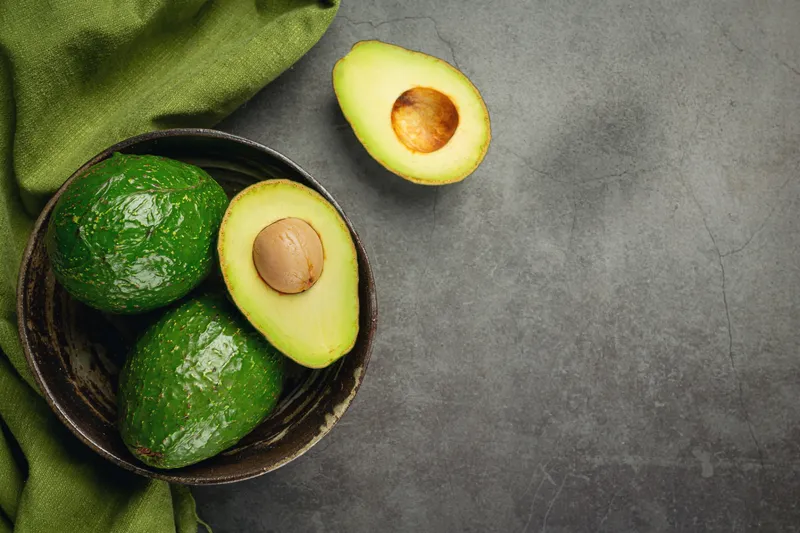
9.
Banana
Bananas are long, curved yellow fruits grown in tropical regions worldwide, originally from Southeast Asia. They have a soft, sweet flesh when ripe, rich in potassium, and are a popular snack, used in smoothies, baking, or eaten plain.

10.
Barberry
Barberries are small, bright red berries from shrubs in Europe and Asia. They have a sharp, tart flavor and are rich in vitamin C, often used dried in Middle Eastern cuisine for rice dishes, teas, or as a souring agent.

11.
Bearberry
Bearberries are small, red berries from evergreen shrubs in northern regions like North America and Europe. They have a tart, mealy taste and are sometimes used in traditional medicine or as a food source in survival situations.

12.
Bilberry
Bilberries are small, blue-black berries native to Europe, similar to blueberries but smaller. They have a sweet-tart flavor and are high in antioxidants, commonly used in jams, pies, or for eye health supplements.
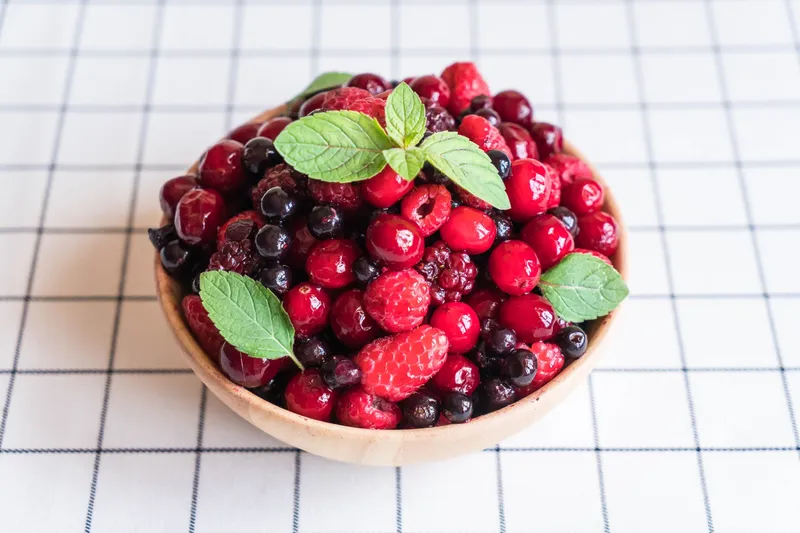
13.
Bitter Orange
Bitter oranges are citrus fruits with thick, bumpy skin, originating from Southeast Asia. They have a sour, bitter taste and are primarily used for their peel in marmalades, liqueurs, or essential oils rather than eaten fresh.
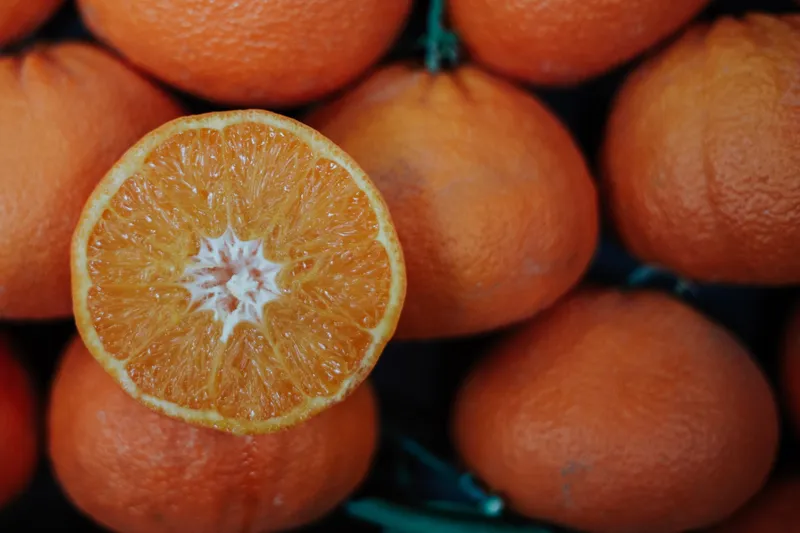
14.
Black Currant
Black currants are small, dark purple berries from bushes in Europe and Asia. They have a strong, tart flavor rich in vitamin C and antioxidants, often used in juices, jams, syrups, or baked goods.
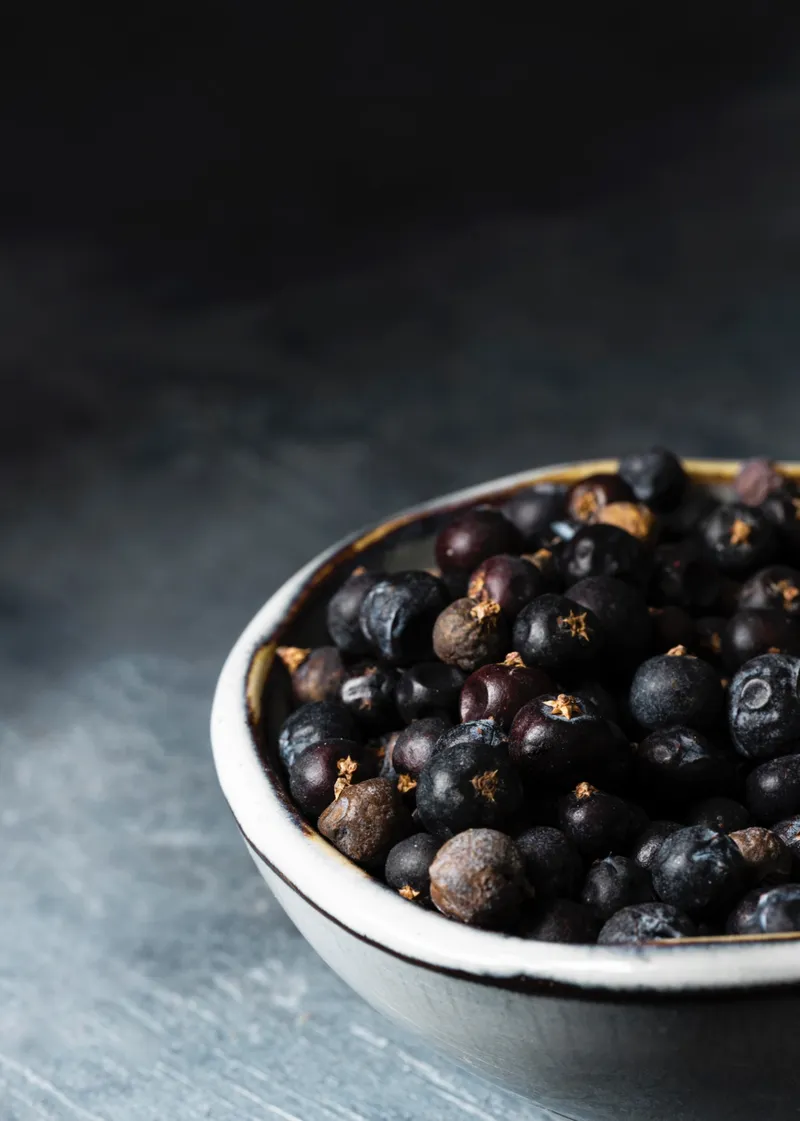
15.
Blackberry
Blackberries are aggregate fruits composed of small drupelets, turning from green to black when ripe, native to Europe and North America. They have a sweet, juicy taste with a hint of tartness, enjoyed fresh, in pies, or as jams.
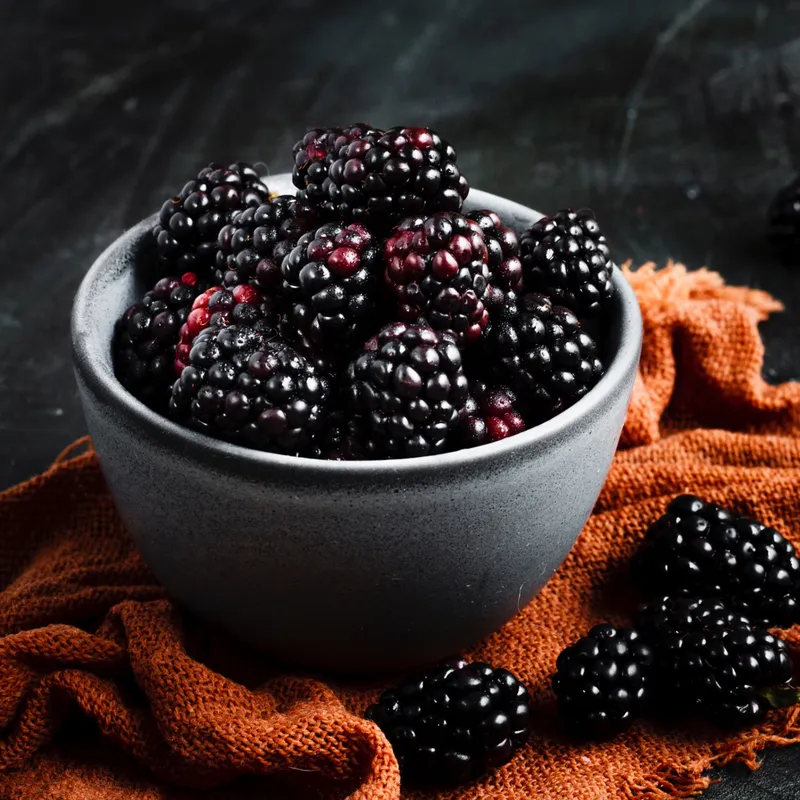
16.
Blood Orange
Blood oranges are a variety of orange with deep red flesh due to anthocyanins, originating from Italy. They have a sweet flavor with raspberry-like notes, rich in vitamin C, and are eaten fresh or used in salads and desserts.
17.
Blueberry
Blueberries are small, round blue berries native to North America. They have a sweet, slightly tangy taste and are packed with antioxidants, commonly eaten fresh, in muffins, smoothies, or as a topping for yogurt.
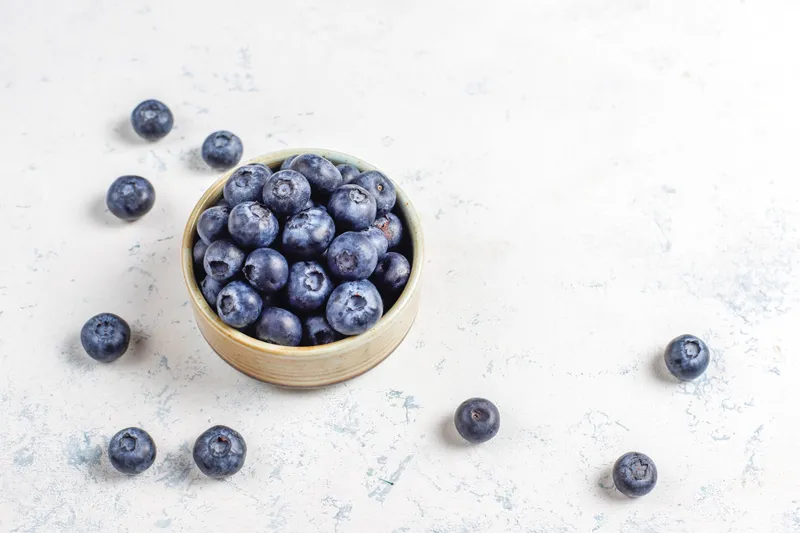
18.
Boysenberry
Boysenberries are a hybrid berry from blackberries, raspberries, and loganberries, developed in California. They are large, dark purple, and juicy with a sweet-tart flavor, used in jams, pies, or eaten fresh.
19.
Breadfruit
Breadfruit is a large, starchy tropical fruit from the Pacific Islands, resembling a potato in texture when cooked. It has a mild, bread-like flavor and is used as a vegetable in dishes like curries or fried as chips.
20.
Cantaloupe
Cantaloupes are melons with netted orange skin and sweet, juicy orange flesh, originating from Persia. They are high in vitamins A and C, commonly eaten fresh in fruit salads or as a refreshing snack.

21.
Caperberry
Caperberries are the pickled fruit of the caper bush, larger than capers, from the Mediterranean region. They have a tangy, briny flavor and are used as a garnish in salads, martinis, or antipasto platters.
22.
Casaba Melon
Casaba melons have wrinkled yellow skin and pale green to white flesh, originating from Turkey. They offer a mildly sweet, cucumber-like taste and are enjoyed fresh or in fruit platters for their refreshing quality.
23.
Cashew Apple
The cashew apple is the juicy, yellow or red fruit attached to the cashew nut, native to Brazil. It has a sweet, astringent flavor and is often used in juices, jams, or fermented into beverages in tropical regions.
24.
Cherimoya
Cherimoyas are heart-shaped tropical fruits with scaly green skin, native to the Andes. They have a creamy, custard-like white flesh with a sweet flavor reminiscent of banana and pineapple, eaten fresh or in desserts.
25.
Cherry
Cherries are small, round stone fruits in red or black varieties, originating from Europe and Asia. Sweet cherries are juicy and sugary, while sour ones are tart, used in pies, jams, or eaten fresh.

26.
Chico Fruit
Chico fruits, also known as sapodilla, have brown, rough skin and sweet, malty flesh, native to Mexico and Central America. They have a gritty texture like pears and are eaten fresh or used in desserts.
27.
Chokeberry
Chokeberries, or aronia berries, are small, dark red to black fruits from North America. They have a very tart, astringent taste but are high in antioxidants, often used in juices, jams, or health supplements.
28.
Citron
Citrons are large, thick-skinned citrus fruits with little flesh, originating from India. They have a fragrant peel used in candied form for baking or in religious rituals, rather than eaten fresh due to their sour taste.
29.
Clementine
Clementines are small, seedless citrus hybrids of mandarins, from Algeria. They have thin, easy-to-peel skin and a sweet, juicy flavor, making them a popular snack fruit, especially during winter holidays.
30.
Cloudberry
Cloudberries are golden, raspberry-like fruits from northern bogs in Scandinavia and Canada. They have a unique tart-sweet flavor with floral notes, often used in jams, liqueurs, or desserts in Nordic cuisine.
31.
Coconut
Coconuts are large, hard-shelled fruits from palm trees in tropical regions. They contain sweet water and white flesh that's nutty and versatile, used in cooking, baking, or as coconut milk and oil.

32.
Cranberry
Cranberries are small, red berries native to North American bogs. They have a sharp, tart flavor and are rich in antioxidants, commonly used in sauces, juices, dried snacks, or holiday dishes.

33.
Crenshaw Melon
Crenshaw melons are hybrid melons with smooth yellow-green skin and salmon-orange flesh, from California. They have a very sweet, juicy taste and are enjoyed fresh or in fruit salads for their aromatic flavor.
34.
Custard Apple
Custard apples, or sugar apples, have knobby green skin and creamy white pulp, native to the Caribbean and Central America. They taste sweet like custard with hints of vanilla, eaten fresh by scooping the flesh.
35.
Damson
Damsons are small, dark purple plums from Europe. They have a very tart, astringent flavor and are rarely eaten fresh, instead used in jams, gins, or pies for their intense taste.

36.
Date
Dates are sweet, chewy fruits from date palm trees in the Middle East. They have a caramel-like flavor and are high in natural sugars, commonly eaten dried as a snack or used in baking and smoothies.
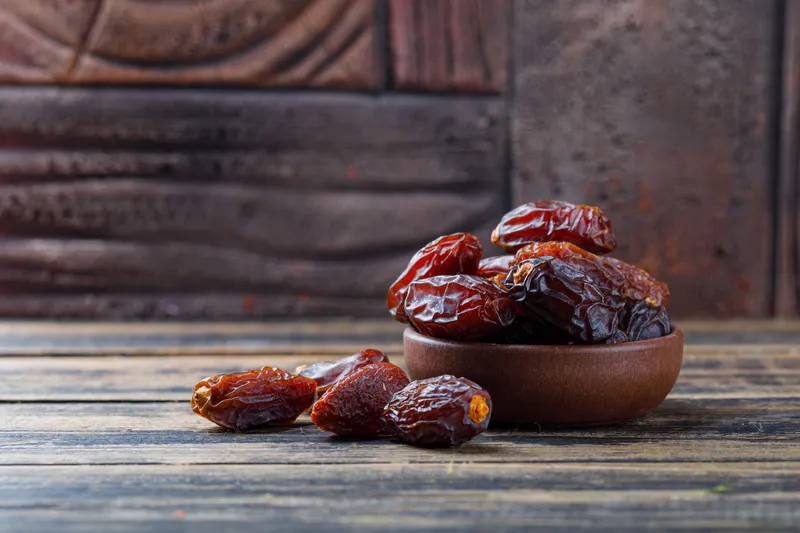
37.
Dewberry
Dewberries are trailing berries similar to blackberries, native to North America. They have a sweet-tart flavor and are smaller and more delicate, often foraged for use in jams, pies, or eaten fresh.
38.
Dragon Fruit
Dragon fruits, or pitaya, have bright pink skin with white or red flesh dotted with black seeds, native to Central America. They have a mild, sweet taste like kiwi and pear, eaten fresh or in smoothies.
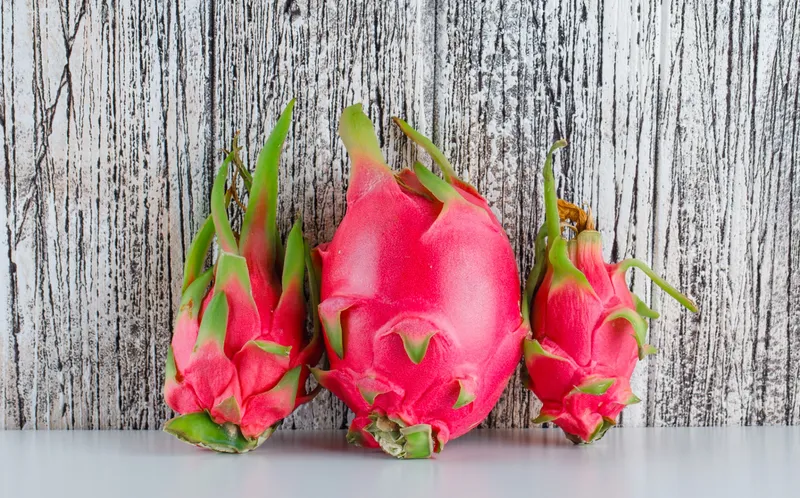
39.
Durian
Durians are large, spiky tropical fruits from Southeast Asia, known for their strong odor. The creamy flesh has a sweet, custard-like flavor with onion notes, eaten fresh or used in desserts despite the smell.
40.
Elderberry
Elderberries are small, dark purple berries from elder trees in Europe and North America. They have a tart flavor and must be cooked to remove toxins, used in syrups, wines, or jams for immune support.
41.
Feijoa
Feijoas, or pineapple guavas, are green, oval fruits from South America. They have a unique sweet-tart flavor blending pineapple, strawberry, and mint, eaten fresh by scooping or used in jams and smoothies.
42.
Fig
Figs are pear-shaped fruits with soft skin and sweet, seedy flesh, native to the Middle East. They have a honey-like flavor and are eaten fresh, dried, or in salads, cheeses, and desserts.

43.
Galia Melon
Galia melons have netted green skin and pale green flesh, a hybrid from Israel. They offer a sweet, aromatic taste with tropical notes, enjoyed fresh or in fruit salads for their juicy texture.
44.
Gooseberry
Gooseberries are small, green or red berries from Europe. They have a tart, grape-like flavor and are high in vitamin C, used in pies, jams, or fools, often cooked with sugar to balance acidity.
45.
Grapefruit
Grapefruits are large citrus fruits with pink or white flesh, originating from Barbados. They have a tangy, slightly bitter taste and are rich in vitamins, eaten fresh, in salads, or as juice.
46.
Grape
Grapes are small, clustered berries in green, red, or purple, native to the Mediterranean. They have a sweet, juicy flavor and are eaten fresh, dried as raisins, or used in wines and jams.
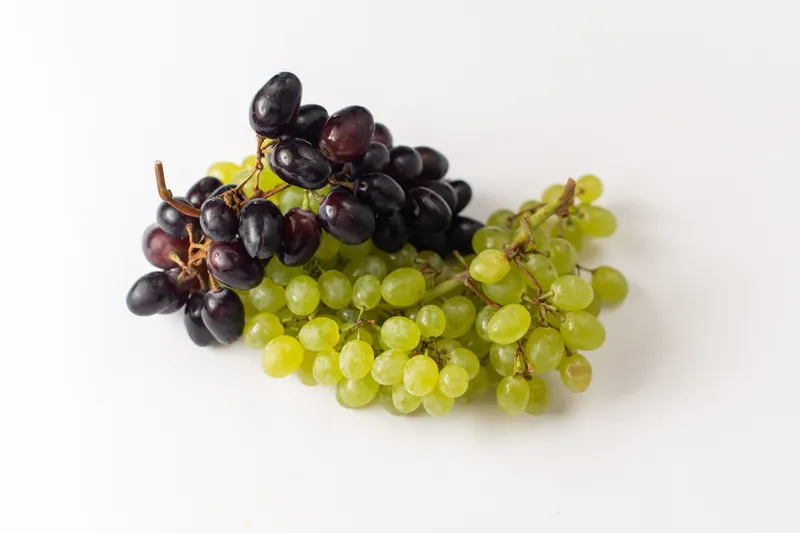
47.
Guava
Guavas are tropical fruits with green or yellow skin and pink or white flesh, native to Mexico. They have a sweet, floral taste with crunchy seeds, eaten fresh, in juices, or as pastes.

48.
Hawthorn Fruit
Hawthorn fruits, or haws, are small red berries from thorny trees in Europe and Asia. They have a tart, apple-like flavor and are used in jellies, wines, or traditional medicines for heart health.
49.
Honeydew Melon
Honeydew melons have smooth pale green skin and sweet green flesh, originating from Persia. They offer a mild, honey-like sweetness and are enjoyed fresh in fruit platters or smoothies.
50.
Huckleberry
Huckleberries are small, dark blue berries native to North America, similar to blueberries. They have a sweet-tart flavor and are foraged for use in pies, jams, or eaten fresh in the wild.
51.
Jackfruit
Jackfruits are massive tropical fruits from India with yellow pods inside. They have a sweet, banana-pineapple flavor when ripe, used as a meat substitute when young or eaten fresh and in desserts.

52.
Jujube
Jujubes, or Chinese dates, are small, red-brown fruits from Asia. They have a sweet, apple-like flavor when fresh and become chewy like dates when dried, used as snacks or in teas.
53.
Juniper Berry
Juniper berries are blue, cone-like fruits from evergreen shrubs in Europe. They have a piney, tart flavor and are used as a spice in gin, meats, or sauces rather than eaten fresh.
54.
Key Lime
Key limes are small, green citrus fruits from Florida, smaller than regular limes. They have a very tart, aromatic flavor and are famous for key lime pie, juices, or in cocktails.
55.
Kiwi
Kiwis have fuzzy brown skin and bright green flesh with black seeds, native to China. They offer a sweet-tart taste like strawberry and banana, eaten fresh, in salads, or as garnishes.
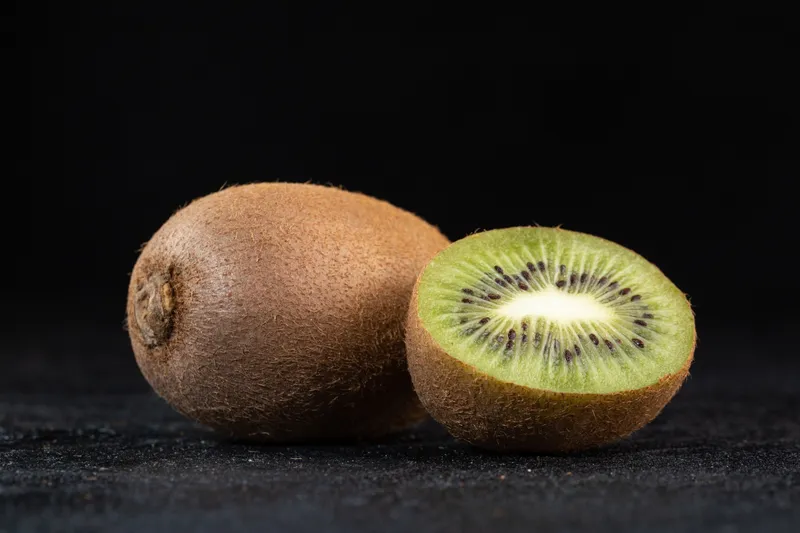
56.
Kumquat
Kumquats are tiny citrus fruits eaten whole, with sweet skin and tart flesh, from China. They have a unique citrus burst and are used in marmalades, candies, or as a fresh snack.
57.
Lemon
Lemons are yellow citrus fruits with sour, acidic juice, originating from Asia. They are rich in vitamin C and used for flavoring in cooking, beverages, or as a cleaning agent.
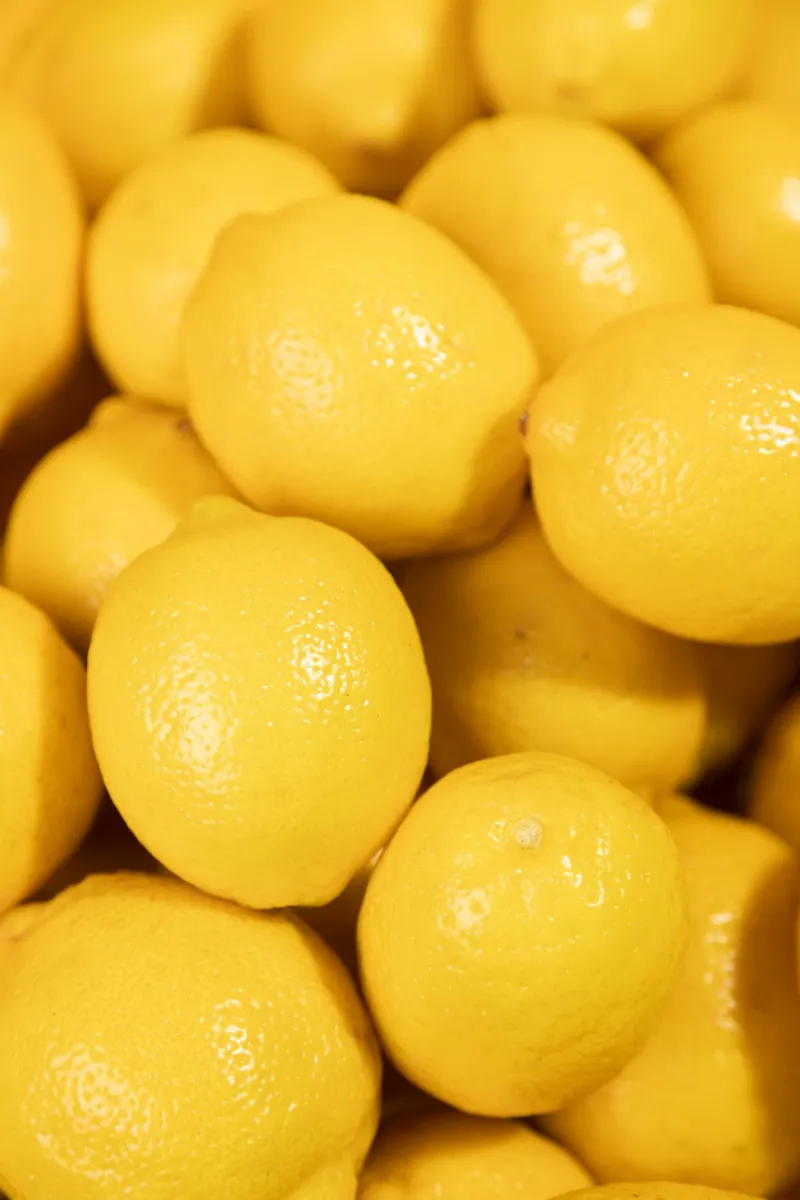
58.
Lime
Limes are green citrus fruits with tart juice, native to Southeast Asia. They add zesty flavor to dishes, drinks like margaritas, or are used in marinades and desserts.
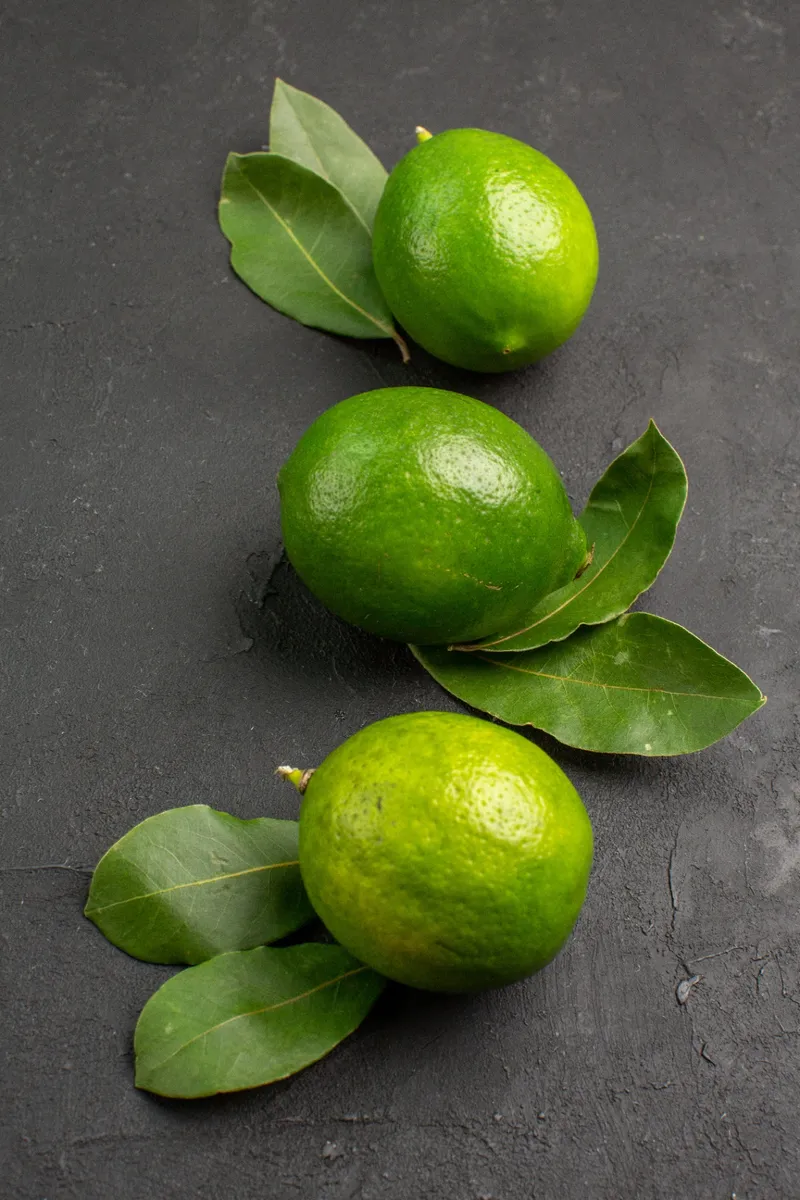
59.
Lingonberry
Lingonberries are small, red berries from northern Europe and Scandinavia. They have a tart, cranberry-like taste and are used in sauces for meats, jams, or as a side in Swedish cuisine.
60.
Loganberry
Loganberries are red, elongated hybrid berries from raspberries and blackberries, developed in California. They have a juicy, tart-sweet flavor and are used in jams, wines, or desserts.
61.
Longan
Longans are small, translucent fruits with brown skin, native to China, similar to lychees. They have a sweet, musky flavor and are eaten fresh, dried, or in Asian desserts and soups.
62.
Loquat
Loquats are small, yellow-orange fruits from China with juicy flesh. They have a sweet-tangy taste like peach and citrus, eaten fresh or used in jams and pies.
63.
Lychee
Lychees have rough red skin and sweet white flesh, native to China. They taste floral and grape-like, eaten fresh, in cocktails, or canned in syrup for desserts.
64.
Mandarin
Mandarins are small, easy-to-peel oranges from China. They have a sweet, mild flavor and are popular as snacks, in salads, or during festive seasons.
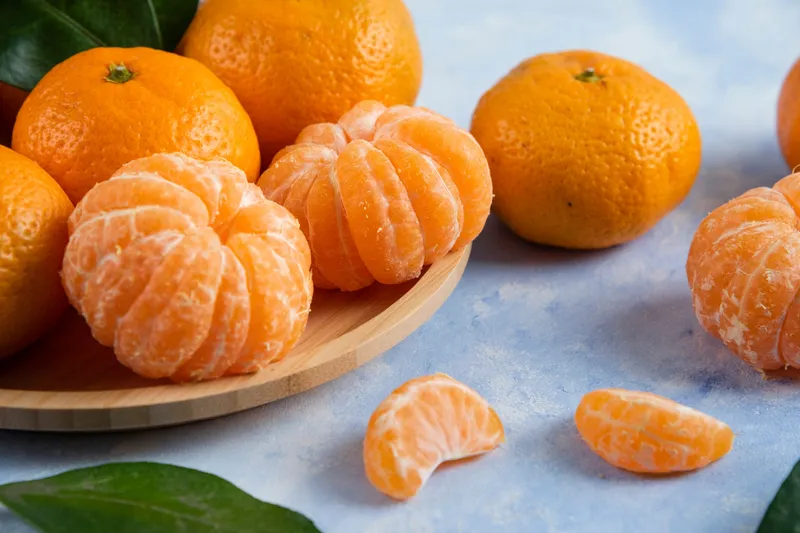
65.
Mango
Mangos are tropical fruits with a large pit, juicy flesh in yellow or orange, native to India. They have a sweet, tropical taste and are eaten fresh, in smoothies, or curries.
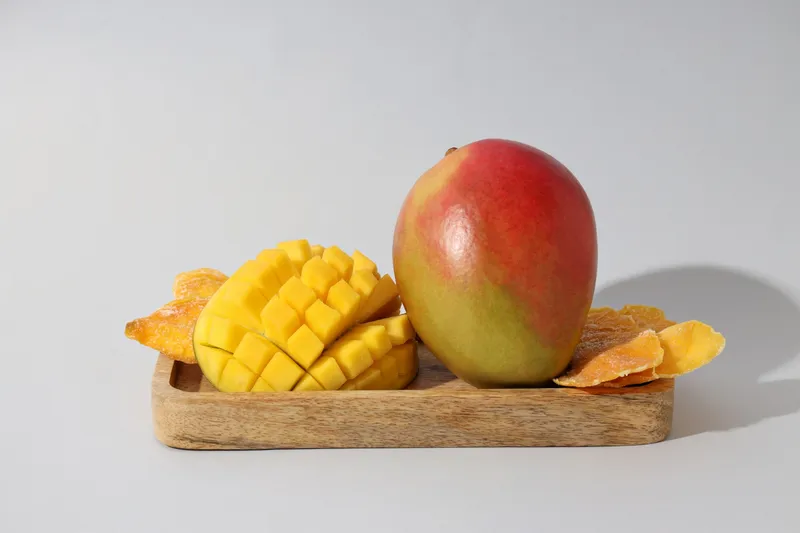
66.
Mangosteen
Mangosteens have purple rind and white segmented flesh, from Southeast Asia. They offer a sweet, tangy flavor like peach and lychee, eaten fresh as a delicacy.
67.
Medlar
Medlars are brown, pome fruits from Persia, eaten when bletted (softened). They have a sweet, apple-cinnamon flavor and are used in jellies or cheeses.
68.
Mulberry
Mulberries are elongated berries in black, red, or white, from Asia. They have a sweet, honey-like taste and are eaten fresh, in pies, or as dried snacks.
69.
Nectarine
Nectarines are smooth-skinned stone fruits like peaches, from China. They have juicy, sweet flesh and are eaten fresh, in salads, or baked in desserts.
70.
Orange
Oranges are round citrus fruits with juicy segments, native to China. They have a sweet, tangy flavor rich in vitamin C, enjoyed as juice, snacks, or in cooking.
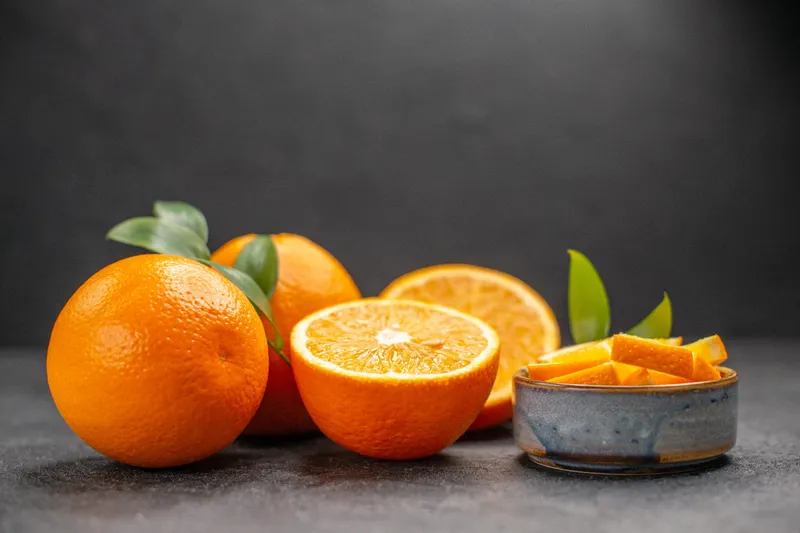
71.
Papaya
Papayas are large tropical fruits with orange flesh and black seeds, from Mexico. They have a sweet, musky taste and contain digestive enzymes, eaten fresh or in salads.
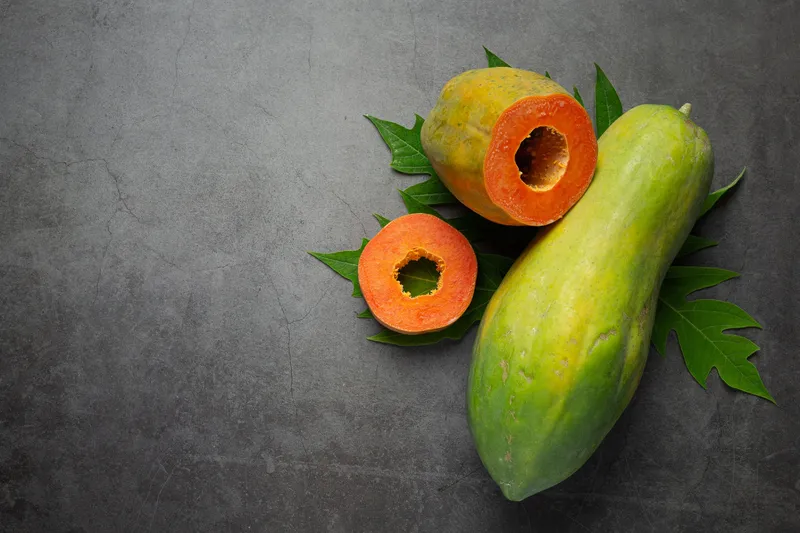
72.
Passion Fruit
Passion fruits have wrinkled purple or yellow skin with seedy pulp, from Brazil. They offer a tart-sweet tropical flavor, used in juices, desserts, or atop yogurt.
73.
Peach
Peaches have fuzzy skin and juicy stone fruit flesh, native to China. They have a sweet, aromatic taste and are eaten fresh, canned, or in cobblers and pies.
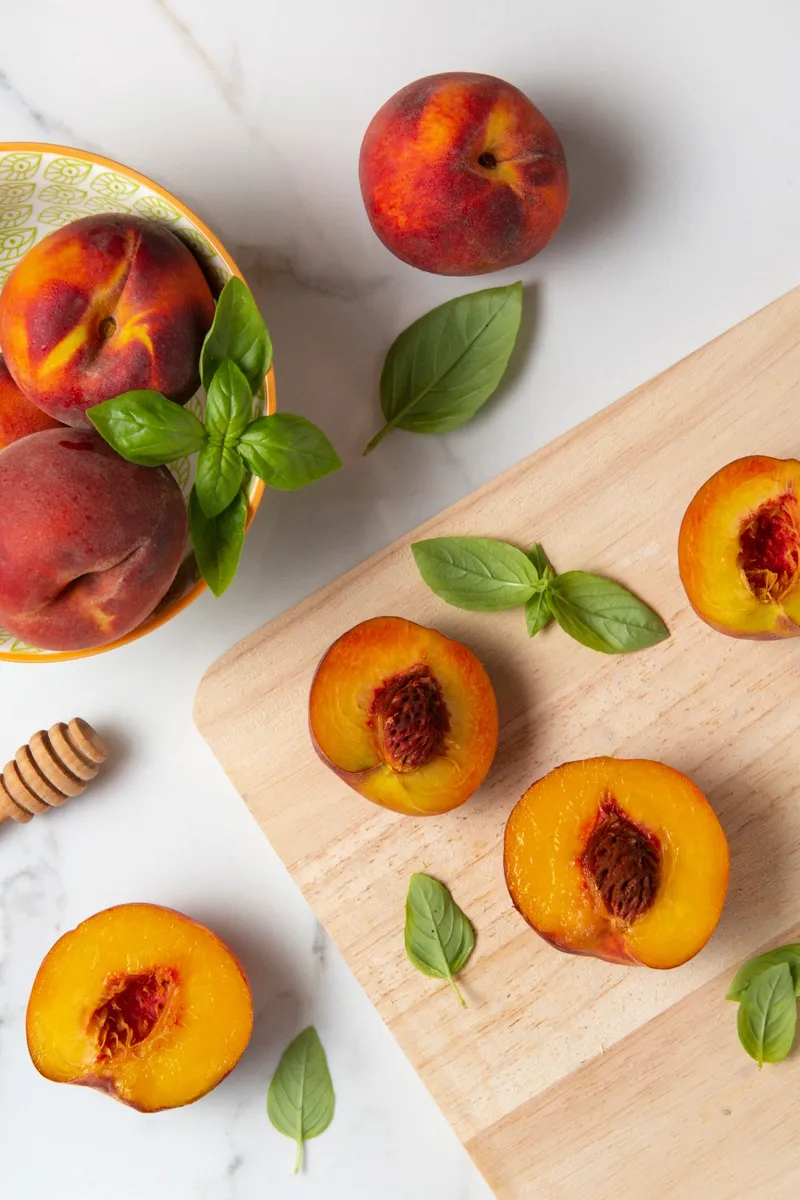
74.
Pear
Pears are bell-shaped fruits with sweet, juicy flesh, from Europe and Asia. They come in various varieties and are eaten fresh, poached, or in salads.

75.
Persian Lime
Persian limes are seedless green citrus, larger than key limes, from Persia. They have a tart flavor and are used in cooking, beverages, and guacamole.
76.
Persimmon
Persimmons are orange fruits native to China, sweet when ripe. Non-astringent types are crisp like apples, while others soften, used fresh or dried.
77.
Physalis
Physalis, or cape gooseberries, have orange berries in papery husks, from South America. They have a sweet-tart tomato-pineapple flavor, eaten fresh or in jams.
78.
Pineapple
Pineapples are spiky tropical fruits with yellow flesh, from South America. They have a sweet-tangy flavor rich in bromelain, eaten fresh, grilled, or in pizzas.

79.
Plantain
Plantains are starchy banana relatives from Southeast Asia. They are cooked like vegetables, fried or boiled, with a mild flavor when ripe.
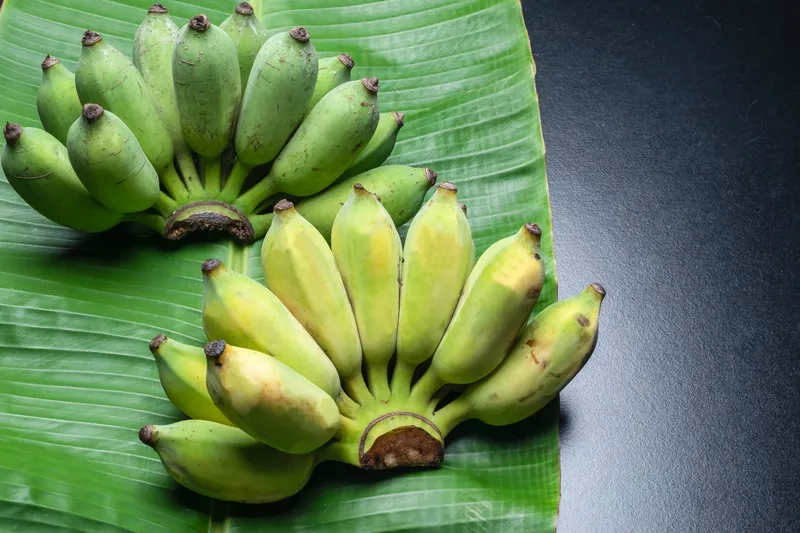
80.
Plum
Plums are smooth-skinned stone fruits in various colors, from Europe. They range from sweet to tart and are eaten fresh, dried as prunes, or in jams.

81.
Plumcot
Plumcots are hybrids of plums and apricots, with juicy flesh. They have a sweet flavor blending both parents, eaten fresh or in desserts.
82.
Pomelo
Pomelos are large citrus fruits with thick rind, from Southeast Asia. They have a mild, sweet grapefruit-like taste and are eaten fresh or in salads.
83.
Pomegranate
Pomegranates have red leathery skin filled with juicy arils, from the Middle East. They offer sweet-tart flavor rich in antioxidants, used in juices or salads.
84.
Prickly Pear
Prickly pears are cactus fruits with spiny skin, from Mexico. They have sweet, melon-like flesh with seeds, eaten fresh or in candies and drinks.
85.
Quince
Quinces are yellow pome fruits from the Middle East, hard when raw. They have a fragrant, tart flavor when cooked, used in jellies, pastes, or poached.
86.
Rambutan
Rambutans have hairy red skin and sweet white flesh, from Southeast Asia. Similar to lychees, they are eaten fresh or canned in tropical regions.
87.
Raspberry
Raspberries are fragile red aggregate berries from Europe. They have a sweet-tart flavor and are used fresh, in jams, desserts, or smoothies.
88.
Red Currant
Red currants are small, bright red berries from Europe. They have a tart taste and are used in jellies, sauces, or baked goods.
89.
Rose Apple
Rose apples are bell-shaped fruits with waxy skin, from Southeast Asia. They have a crisp, rose-scented flavor like apple and watermelon, eaten fresh.
90.
Rowan
Rowan berries are small, orange-red from European trees. They are tart and used cooked in jellies or wines after frost to reduce bitterness.
91.
Salak
Salaks, or snake fruits, have scaly brown skin, from Indonesia. They have crunchy, sweet flesh like pineapple and apple, eaten fresh.
92.
Salmonberry
Salmonberries are orange, raspberry-like from the Pacific Northwest. They have a mild sweet-tart flavor and are foraged for jams or eaten fresh.
93.
Sapodilla
Sapodillas have brown skin and sweet, gritty flesh, from Central America. They taste like brown sugar and pear, eaten fresh or in shakes.
94.
Soursop
Soursops have green spiky skin and creamy flesh, from the Caribbean. They have a sweet-sour strawberry-pineapple flavor, used in juices or ice creams.
95.
Star Fruit
Star fruits, or carambola, are star-shaped yellow, from Southeast Asia. They have crisp, tangy flesh like grape and lemon, eaten fresh or in salads.
96.
Strawberry
Strawberries are red berries with external seeds, native to the Americas. They have a sweet, juicy flavor and are used in desserts, jams, or fresh.

97.
Sweet Lime
Sweet limes are mild citrus with low acidity, from India. They have a sweet, orange-like taste and are eaten fresh or juiced for a less tart option.
98.
Tamarillo
Tamarillos, or tree tomatoes, are egg-shaped red fruits from the Andes. They have a tart, tomato-plum flavor and are used in sauces or eaten fresh.
99.
Tangerine
Tangerines are small citrus with loose skin, from Morocco. They have a sweet, tangy flavor and are popular as portable snacks or in salads.
100.
Ugli Fruit
Ugli fruits are Jamaican hybrid citrus with wrinkled skin. They have a sweet, grapefruit-like taste and are eaten fresh for their juicy segments.
101.
Watermelon
Watermelons are large melons with red juicy flesh, from Africa. They have a sweet, refreshing taste high in water, perfect for summer picnics.

102.
Yuzu
Yuzu is a Japanese citrus with bumpy yellow skin. It has an aromatic, tart flavor blending lemon and mandarin, used in sauces, teas, or perfumes.